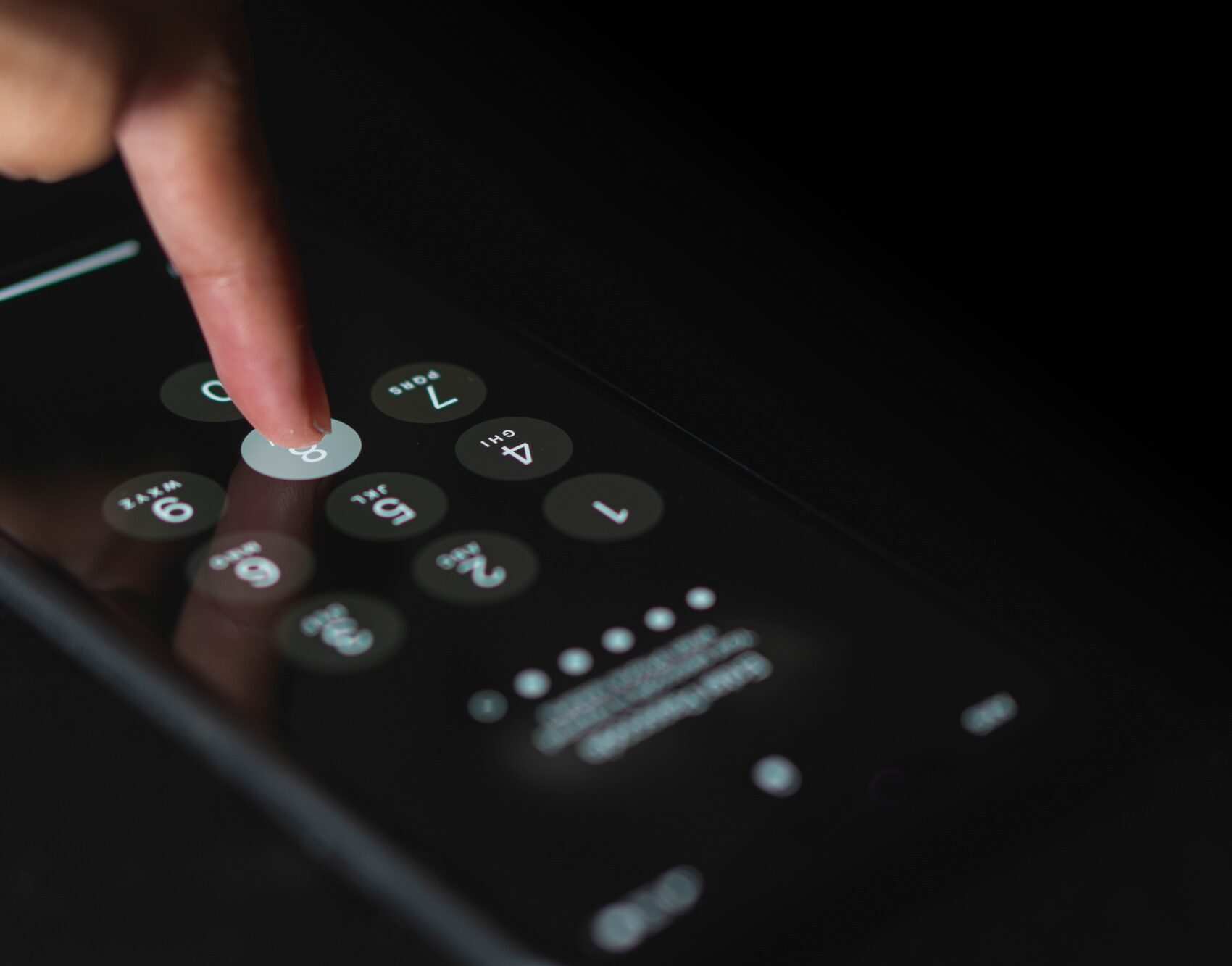The way we log into business systems is evolving rapidly. In 2025, companies are looking beyond passwords and toward more secure, user-friendly authentication methods. Business owners are realizing that the old username-and-password combo is no longer sufficient to protect sensitive data. Weak or stolen passwords are a leading cause of data breaches, so forward-thinking organizations are exploring modern alternatives that offer stronger security and better convenience.
Modern authentication methods like passwordless logins, biometrics, and passkeys are gaining traction because they eliminate the weaknesses of traditional passwords. Unlike a password that can be guessed or stolen, these methods rely on factors that are much harder for attackers to compromise. For example, biometric authentication uses unique personal traits (such as fingerprints or facial recognition) that can’t be duplicated. Passkeys, a new technology backed by industry giants, use cryptographic keys stored on a device (like your phone) instead of a password – making them phishing-resistant and extremely difficult to crack. In addition, many businesses are implementing adaptive multi-factor authentication (MFA), which adjusts security requirements based on the context of a login (such as the user’s location or behavior). This means a sign-in attempt from a new location or device might trigger an extra verification step, keeping criminals out even if they somehow obtain a password.

Why Traditional Passwords Are Becoming Obsolete
For decades, passwords have been the default security barrier to our accounts. Unfortunately, they’ve also become one of the weakest links in cybersecurity. Employees often reuse passwords across sites or choose ones that are easy to remember (and thus easy to guess). Hackers exploit these habits through tactics like phishing emails (tricking users into revealing passwords) and brute-force attacks (using software to rapidly guess passwords). A single compromised password can lead to a major breach.
Businesses face an ever-growing list of password-related threats: credential stuffing (where attackers use leaked passwords from one breach to break into other accounts), keylogging malware that records what users type, and even social engineering scams targeting password resets. These risks are amplified in an era where many employees work remotely or access cloud applications from various devices. In short, relying on passwords alone is an increasing liability. The year 2025 finds many companies at a tipping point — either stick with the old ways and risk getting hacked, or embrace newer, safer authentication methods.
“Passwordless” doesn’t mean no security — it means using something other than a password to verify identity
Emerging Secure Authentication Methods
Passwordless Authentication: “Passwordless” doesn’t mean no security — it means using something other than a password to verify identity. Popular passwordless approaches include sending a one-time login link or code to a user’s email or phone (so the “password” is essentially a temporary code that expires quickly), or push notifications through an authenticator app where the user approves the login on their mobile device. These methods remove the static password from the equation entirely. For businesses, implementing passwordless logins can significantly reduce successful phishing attacks because there’s no permanent password to steal or divulge.
Biometrics: Fingerprint scans, facial recognition, and even iris scans are becoming common for unlocking phones and laptops – and businesses are adopting them for system access, too. Biometric authentication offers a double benefit: it’s highly secure (since your fingerprint or face is extremely hard to fake), and it’s user-friendly (no codes to remember or carry around). Many modern laptops and smartphones support biometric logins out of the box. For instance, employees can use the fingerprint reader on their device or facial scan (like Windows Hello or Apple Face ID) to access corporate apps. Biometric data is typically stored and matched locally, which means even if an attacker breaches a company’s server, they can’t retrieve someone’s fingerprint image to reuse. While biometrics aren’t perfect – there are concerns about spoofing and privacy – they add a formidable layer of security when combined with other factors.
Passkeys and FIDO2 Security Keys: Passkeys are an evolution of the FIDO2 security standards and are seeing increased adoption in 2025. Big tech companies (Microsoft, Google, Apple) are pushing passkeys as the future of login. A passkey usually works in combination with a device you own. For example, when logging in to an account, you might get a prompt on your smartphone to confirm – using your phone’s PIN or biometric – and that’s it, you’re in. There’s no traditional password involved. The magic behind the scenes is a pair of cryptographic keys: one public, one private. Your private key (stored safely on your device) proves your identity by mathematically signing a login request that the public key (on the server) verifies. Because the private key never leaves your device and cannot be guessed, this method is extremely secure. Similarly, physical security keys (tiny USB or NFC devices) based on FIDO2 standards let users log in by plugging in or tapping the key – a great option for high-security environments. These keys are immune to phishing; even if a user is tricked by a fake login page, the key won’t authenticate to an illegitimate site. Businesses that have implemented passkeys or security keys report not only better security but also faster login times, since employees aren’t fumbling with passwords or reset procedures.
Adaptive Multi-Factor Authentication (MFA): Many companies have used MFA (requiring a second step like a code or app approval in addition to a password) for years now. The trend in 2025 is toward adaptive MFA, meaning the system intelligently decides when to challenge a user with that second factor. For instance, if you always log in from the office network, the system might not prompt for MFA every time. But if you attempt access from a new coffee shop Wi-Fi or unusual country, it will require verification or even block the attempt. Adaptive MFA systems assess risk signals in real time – such as the device being used, the IP address location, the time of day, and even user behavior patterns. This balances security with convenience. For business owners, adaptive MFA means your team isn’t constantly inconvenienced by security prompts when it’s not necessary, but hackers face a tight wall of defense if they try using stolen credentials from elsewhere.
How Businesses Can Embrace Safer Alternatives
Adopting these new authentication methods might sound complicated, but businesses have several practical ways to get started:
- Implement Single Sign-On (SSO) with Modern ID Providers: Use an identity platform (like Microsoft Entra ID (formerly Azure AD) or Google Workspace) that supports passwordless authentication and passkeys. These platforms allow employees to use one secure login (with MFA or biometrics) to access multiple business applications. By centralizing identity management, you can more easily roll out advanced authentication methods company-wide and eliminate the numerous weak passwords employees would otherwise juggle.
- Roll Out Hardware Security Keys for Sensitive Accounts: Identify high-risk user accounts (such as IT admins, executives, finance personnel) and equip those users with physical security keys. These keys can be required for login to critical systems, practically eliminating the risk of phishing-based account takeover. They are easy to use – often just a tap – and many can work wirelessly via Bluetooth or NFC. Provide training so users know how to use them and have a backup method in case a key is lost.
- Leverage Built-in Biometric Options: Most modern laptops and smartphones that your employees use have built-in biometric login capabilities. Work with your IT provider to enable biometric sign-in for your workforce. For example, configure your corporate laptops to allow fingerprint or face recognition login via Windows Hello for Business or macOS Touch ID. On mobile device management (MDM) platforms, enforce policies that device unlock requires biometric or strong PIN. This way, even if a device is stolen, attackers can’t easily access company apps on it.
- Educate and Phase the Transition: Moving to passwordless or MFA-centric authentication is a change that affects every employee, so change management is crucial. Educate your staff on why the company is moving beyond passwords – emphasize the security benefits and also the convenience (no more password resets!). Start with a pilot program: perhaps let interested employees opt-in to passwordless login first, gather feedback, then gradually make it the default. Meanwhile, maintain traditional password logins as a backup during the transition, but with strong policies (length, uniqueness) and continued MFA for safety. Over time, as confidence grows, you can phase out passwords for the majority of use cases.
- Work with IT Security Experts: If your in-house tech team is small or not specialized in cybersecurity, consider bringing in a managed IT services provider to assist with deployment. They can help evaluate your current systems for compatibility with passwordless tech, implement necessary software or hardware (like an Identity and Access Management solution), and ensure everything integrates smoothly. Experts can also help you set up policies for adaptive MFA, such as defining which scenarios trigger extra verification.
Conclusion: A Passwordless Future for a Safer Business
The future of business authentication is clear – and it’s beyond passwords. Embracing methods like biometrics, passkeys, and adaptive MFA can dramatically improve your company’s security posture while also streamlining the login experience for employees. As cyber threats continue to evolve in 2025, clinging to old password practices puts your business at unnecessary risk. By taking proactive steps to adopt these modern solutions, you’re not just reacting to security problems – you’re preventing them. The result is fewer breaches, less downtime, and more trust from your customers and partners that their data is safe with you.




